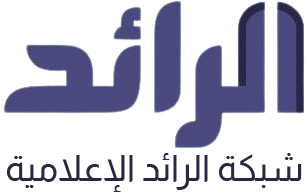(Author: Libyan Gazette Editorial Staff)
Canada donated $725,000, which helped purchase 20 new chemical tanks with GPS tracking devices, as part of an international effort to remove dangerous chemicals from Libya.
The operation to remove the chemicals wrapped up last week after a ship, which was sent from Denmark, dropped off 500 metric tonnes of the dangerous chemicals at a port in Germany. The chemicals were then transported to a facility in Munster, Germany, where they will be destroyed.
Along with Canada, Britain, Italy and Spain were also involved in the operation.
An armed convoy escorted the tanks with the hazardous chemicals from Libya’s desert to Misrata’s coast where they were loaded onto ships and taken to Germany in absolute secrecy.
The Globe and Mail obtained information on the role Canada played in the operation.
Deepti Choubey, who works for the Organization for the Prohibition of Chemical Weapons, which led the efforts, said “This operation happened because Canada was able to buy these new tanks for transferring the materials and also the U.S. donated some tanks as well. It is a huge success story. ”
The western countries realized the danger Libya was in after an ISIS fighter took out two security officers at a checkpoint located 1.6 kilometres from Ruwagha, the only site with chemical-weapons in Libya.
“ISIS was operating very close and we knew it was a matter of time when they would attack the site because the site is also a huge bankers bazaar of conventional weapons. That’s why we started a very serious process and Canada was one of the partners who supported us financially and played an active role in the consultations,” said Ali Gebril, Libya’s spokesperson to the OPCW.
The concern arose as the chemicals at the site included phosphorus trichloride and 2-chloroethanol, which could have been used to make 100 metric tonnes of nerve agent and 30 metric tonnes of sulfur mustard, also known as mustard gas.
In 2015, ISIS had used sulfur mustard in Syria and many worried they would use it again in Libya.
The operation itself was a huge risk. The chemicals were stored in 25 year old barrels that were eroding and leaking. In addition, ISIS fighters occasionally traveled between Ruwagha and Misrata.
“The [main] concern was how to remove the chemicals from location in Ruwagha to the north. It was a huge challenge because of the ongoing battle between the Libyan forces and [ISIS],” Gebril said.
Libyans transported the chemicals to the tanks purchased by Canada in mid-July after which they were stored in a protected storage site before being taken to Misrata where they were transferred in August onto the Danish ship.
Libyan officials originally had planned to destroy the chemicals by using sophisticated Canadian plasma technology. However, after ISIS began attacking areas near the Ruwagha site the plans were canceled.
“We had a very successful negotiation in Canada. We got an offer but unfortunately the situation in Libya was very dangerous to bring such technology to Libya to deal with these chemicals,” Gebril explained.
Canada has been involved with the elimination of chemical weapons in Libya since 2012 when the program started, contributing $6 million to the OPCW.
“We commend the OPCW for co-ordinating this complex undertaking and Libya’s Government of National Accord for in requesting and then facilitating the removal of these chemicals,” said the Canadian Foreign Affairs Minister Stéphane Dion.
